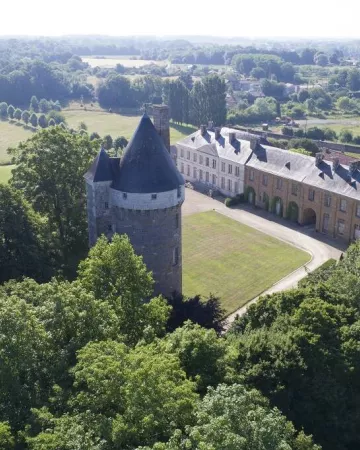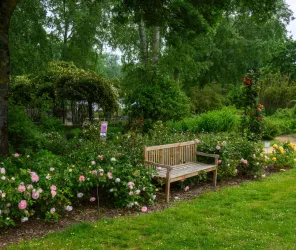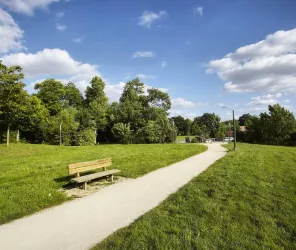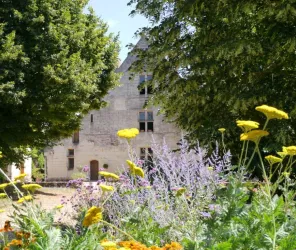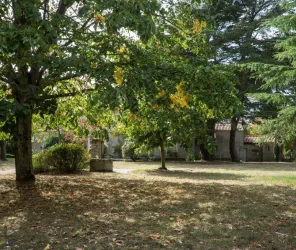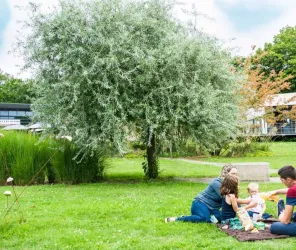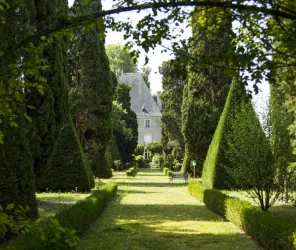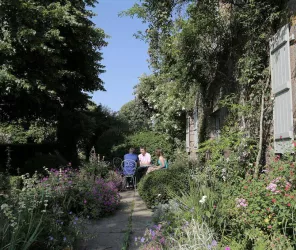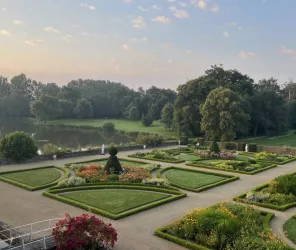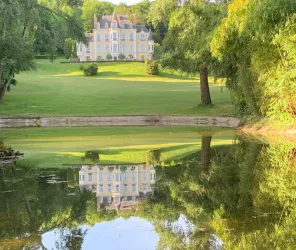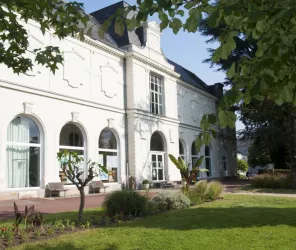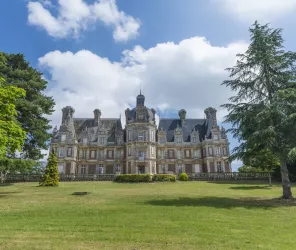Parc du Château de L'Hermenault
The Parc du Château de L'Hermenault is open for the Heritage Days on 20 and 21 September 2025 from 2pm to 6pm.
In the south of Vendée, come and discover the park of the Chateau de l'HERMENAULT XVII and XVIII.Type: regular French-style park laid out in the 17th and 18th centuries. Listed in the Inventaire Supplémentaire des Monuments Historiques. French Heritage Society Award 2009.
History: situated on a promontory between plain and hedged farmland, the site was first home to a fortified priory around the year 1000. Attached to Maillezais Abbey, it later became the summer residence of the bishops of Maillezais. Mgr d'Estissac built a large Renaissance château here.
His secretary, Rabelais, stayed here. He sent him plane tree seeds from Rome for the park. During the Wars of Religion, the castle was ransacked. It was restored by a new bishop, Mgr de Sully Bethune, after the bishopric was transferred to La Rochelle in the 17th century.
The arcaded outbuildings, barn, park and terraces were subsequently converted.
In the 18th century, Mgr de Crussol d'Uzes built the Logis des Dames in the style of La Rochelle.
During the Revolution, the bishops' residence became national property and was bought by Daniel Garesche, a shipowner and mayor of La Rochelle.
Bought back in 1806 by Pierre Godard des Breuze, a colonel of the Empire, the site has remained in the same family ever since.
Four 110-metre-long grass terraces link the castle platform to the Longèves river, bordering a large semi-circular meadow. The terraces are overlooked by a row of remarkable plane trees known as Rabelais trees. This meadow was laid out using a network of canals, centred on the Miroir d'Eau.
The Longèves canal, lined with a stone bridge, a wash-house and a water mill, ends in a large circular pool that was once used as a horse swimming pool.
A vegetable garden and a colossal barn with a Philibert Delorme-style roof frame add to the charm of this timeless pastoral walk.
Practical information
Theme of the park and garden
Park
Type of park and garden
Collection of plants
Vegetable garden
Architectural style of the park and garden
French style
Roof garden
Category of park and garden
Protected parks and gardens under the Historic Monuments programme
Location
Further information
Groups accepted from 10 to 20 persons
Pets not allowed
Rates and payment methods
Prices
Full adult price starting from 5€ (À partir de 12 ans)
Payment methods
Cheques and postal orders
Contact Parc du Château de L'Hermenault
For further information, please contact the service provider directly by completing the form below


